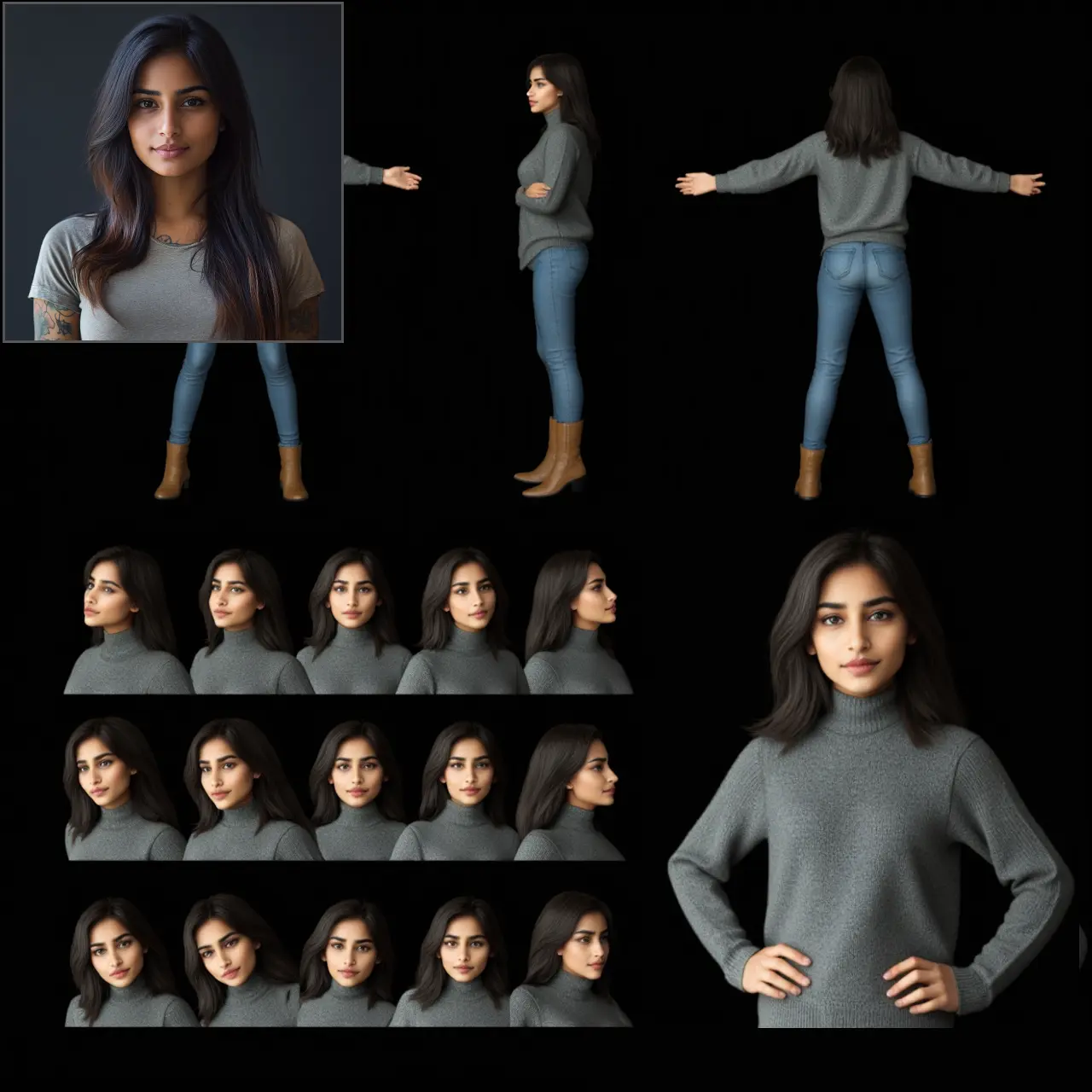ComfyUI Node: SVD_img2vid_Conditioning
SVD_img2vid_Conditioning
Categoryconditioning/video_models
ComfyAnonymous (Account age: 833days) Extension
ComfyUI Latest Updated
2025-04-05 Github Stars
73.39K
How to Install ComfyUI
Install this extension via the ComfyUI Manager by searching for ComfyUI- 1. Click the Manager button in the main menu
- 2. Select Custom Nodes Manager button
- 3. Enter ComfyUI in the search bar
Visit ComfyUI Online for ready-to-use ComfyUI environment
- Free trial available
- 16GB VRAM to 80GB VRAM GPU machines
- 400+ preloaded models/nodes
- Freedom to upload custom models/nodes
- 200+ ready-to-run workflows
- 100% private workspace with up to 200GB storage
- Dedicated Support
SVD_img2vid_Conditioning Description
Transform static images into dynamic videos using advanced conditioning techniques for AI artists to create videos with specific visual and temporal characteristics.
SVD_img2vid_Conditioning:
The SVD_img2vid_Conditioning node is designed to facilitate the transformation of static images into dynamic video sequences by leveraging advanced conditioning techniques. This node is particularly useful for AI artists who want to create videos from images with specific visual and temporal characteristics. By using this node, you can condition your video generation process with various parameters, ensuring that the resulting video aligns with your artistic vision. The node integrates seamlessly with other components in the pipeline, making it a powerful tool for generating high-quality, coherent video content from static images.
SVD_img2vid_Conditioning Input Parameters:
clip_vision
The clip_vision parameter expects a CLIP_VISION input, which is used to encode the initial image into a visual embedding. This embedding serves as a foundational element for conditioning the video generation process. The quality and characteristics of the visual embedding can significantly impact the final video output.
init_image
The init_image parameter requires an IMAGE input, which is the starting point for the video generation. This image will be transformed into a video sequence, and its visual features will be preserved and extended across the video frames.
vae
The vae parameter expects a VAE (Variational Autoencoder) input, which is used to encode the initial image into a latent space. This latent representation is crucial for generating coherent video frames that maintain the visual consistency of the initial image.
width
The width parameter specifies the width of the generated video frames. It accepts an integer value with a default of 1024, a minimum of 16, and a maximum defined by nodes.MAX_RESOLUTION, with increments of 8. This parameter allows you to control the resolution of the video frames.
height
The height parameter specifies the height of the generated video frames. It accepts an integer value with a default of 576, a minimum of 16, and a maximum defined by nodes.MAX_RESOLUTION, with increments of 8. This parameter allows you to control the resolution of the video frames.
video_frames
The video_frames parameter determines the number of frames in the generated video. It accepts an integer value with a default of 14, a minimum of 1, and a maximum of 4096. This parameter allows you to control the length of the video.
motion_bucket_id
The motion_bucket_id parameter is an integer that specifies the motion bucket to be used for video generation. It has a default value of 127, a minimum of 1, and a maximum of 1023. This parameter influences the motion characteristics of the generated video.
fps
The fps parameter specifies the frames per second for the generated video. It accepts an integer value with a default of 6, a minimum of 1, and a maximum of 1024. This parameter allows you to control the playback speed of the video.
augmentation_level
The augmentation_level parameter is a float that determines the level of augmentation applied to the video frames. It has a default value of 0.0, a minimum of 0.0, and a maximum of 10.0, with increments of 0.01. This parameter allows you to introduce variations and enhancements to the video frames.
SVD_img2vid_Conditioning Output Parameters:
positive
The positive output is a CONDITIONING parameter that contains the positive conditioning data for the video generation process. This data is used to guide the generation of video frames that align with the desired visual characteristics.
negative
The negative output is a CONDITIONING parameter that contains the negative conditioning data for the video generation process. This data is used to guide the generation of video frames by providing contrastive information, helping to refine the final output.
latent
The latent output is a LATENT parameter that contains the latent representation of the initial image. This latent data is crucial for generating coherent and visually consistent video frames.
SVD_img2vid_Conditioning Usage Tips:
- Ensure that the
init_imageis of high quality and resolution to achieve the best video output. - Experiment with different
motion_bucket_idvalues to achieve various motion effects in the generated video. - Adjust the
augmentation_levelto introduce creative variations and enhancements to your video frames.
SVD_img2vid_Conditioning Common Errors and Solutions:
Error: "Invalid image dimensions"
- Explanation: The dimensions of the
init_imagedo not meet the required specifications. - Solution: Ensure that the
init_imagedimensions are within the acceptable range and divisible by 8.
Error: "VAE encoding failed"
- Explanation: The VAE component encountered an issue while encoding the initial image.
- Solution: Verify that the VAE model is correctly loaded and compatible with the input image.
Error: "CLIP_VISION encoding failed"
- Explanation: The CLIP_VISION component encountered an issue while encoding the initial image.
- Solution: Ensure that the CLIP_VISION model is correctly loaded and compatible with the input image.
SVD_img2vid_Conditioning Related Nodes
RunComfy is the premier ComfyUI platform, offering ComfyUI online environment and services, along with ComfyUI workflows featuring stunning visuals. RunComfy also provides AI Models, enabling artists to harness the latest AI tools to create incredible art.



